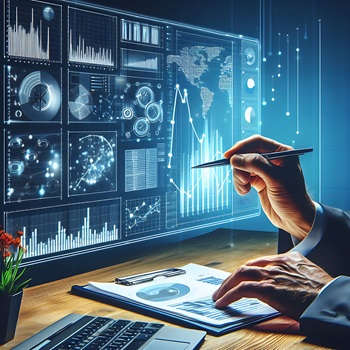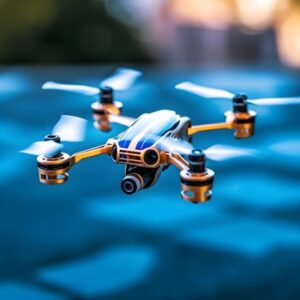Artificial Intelligence
![]()
Generative AI
Generative AI refers to a category of artificial intelligence systems that can create new content, such as text, images, music, or even entire virtual environments. Unlike traditional AI systems that are primarily designed to analyze data and make predictions or classifications based on existing information, generative AI models are capable of producing novel data that resembles the input they were trained on. Key aspects include Machine Learning models, Training data, Creativity and innovation and Applications.
Data Engineering
Data Engineering and Analytics is a comprehensive field focused on collecting, storing, processing, and analyzing data to extract insights and support decision-making. It involves building and maintaining systems and infrastructure to efficiently and reliably manage large volumes of data.
At Ambot365, we elevate these capabilities by integrating basic automation with Robotic Process Automation (RPA) to create intelligent dashboards. These dashboards offer real-time visibility from anywhere, consolidating all your data into one centralized location. Your search for stored data ends here with Ambot365’s streamlined and accessible data solutions.


Chatbot
AmBot 365 specializes in creating bespoke chatbot solutions designed to enhance customer support and engagement. These AI-driven applications mimic human-like conversations and can be integrated across multiple platforms. Chatbots provide immediate assistance, personalization, and employ AI and machine learning to refine responses. Various types of chatbots include voice, customer service, lead generation, social media, companion, and FAQ. Advantages for businesses consist of quicker responses, round-the-clock support, improved user experiences, heightened customer interactions, and an impressive return on investment.
Sentiment Analysis
Sentiment analysis is widely used across various industries to understand and respond to human emotions and opinions, enhancing customer experiences, guiding marketing strategies, and shaping product development. Key aspects include Text classification, which involves classifying pieces of text.
![]()

Power BI (AI)
Power BI is a business analytics service by Microsoft that provides interactive visualizations and business intelligence capabilities. Power BI integrates various AI features to enhance data analysis and insights. These AI features allow users to perform advanced analytics and gain deeper insights from their data without requiring extensive data science expertise. Some key AI capabilities in Power BI include Key Influencers Visual, Natural Language Processing, Automated Insights, AI-Powered Data Preparation.
Image Analytics
Image analytics, also known as image recognition or image analysis, involves extracting meaningful information from images using computer vision and machine learning techniques. It includes image preprocessing, feature extraction, object detection and recognition, image classification, facial recognition, and image captioning. By leveraging machine learning, image analytics automates visual data interpretation, offering valuable insights and enabling innovative applications across multiple industries.


Internet of Things (IoT)
The Internet of Things (IoT) refers to a network of connected devices that communicate with each other and the cloud. IoT systems have three components: smart devices, IoT applications, and graphical user interfaces. They use technologies such as edge computing, cloud computing, and machine learning to process data and make real-time decisions. IoT devices are utilized across various industries, including connected cars, smart homes, smart buildings, and smart cities. These devices help improve efficiency, safety, and precision in various processes, such as energy consumption, maintenance, and infrastructure management.
Drone Solution
A Drone Solution refers to the integration of drones (unmanned aerial vehicles, UAVs) with technologies and software to perform specific tasks or solve particular problems across different industries. These solutions harness the capabilities of drones to capture aerial data, perform surveillance, deliver goods, and much more.

